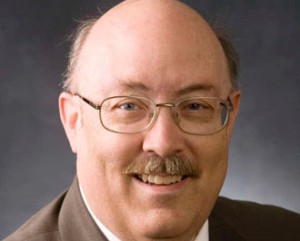Salt Lake City, Utah was founded by leaders and members of the Church of Jesus Christ of Latter-day Saints in 1847, as they arrived after a difficult overland trek to escape religious persecution. Over time, the church has grown from a small, regional group to a world-wide, thriving major religion. Likewise, the city has grown into a major center of commerce and industry, with residents of many religions. Despite the broadened scope of each, a special relationship between the Church and its headquarter city remains.
Salt Lake City has faced many of the challenges common to cities: upper-income flight to the suburbs, aging infrastructure, an influx of low-income residents with heavier claims on public services, decreased economic vitality, and increased crime. Like many cities, Salt Lake City has sought to attract businesses in order to provide jobs for residents and prevent the degradation of the city environment.
The Church has shared the city’s concern for economic vitality, both out of concern for the residents’ livelihoods and because of the Church’s downtown Temple Square which attracts thousands of visitors annually. Were Salt Lake City to suffer urban decay, these visitors would be affected.
In recent years the area around Temple Square in Salt Lake City looked likely to suffer exactly that fate. Many businesses had moved to other areas of the city and the area was becoming run down, decreasing the quality of life for residents.
The Church has responded in two ways. First, through its Inner City Project, the Church has assigned service missionaries to provide job training, transportation, and other help to inner-city Salt Lake City residents. The hope is that the city environment will benefit from residents who are less plagued by joblessness, health troubles, and feeling hopeless to rise economically. Second, the Church has invested in the City Creek Mall as an economic development project, in hopes that the construction and other jobs will provide opportunity for residents and that the new infrastructure will stave off urban decay.
Some criticize the church for its investment, judging that the funds could have been better spent elsewhere. (The total estimated cost of the project is $1.5 billion; it is not known how this was shared between the church and its development partner, The Taubman Company.) These criticisms ignore the merits of the Church’s strategy–the City Creek Center addresses the roots of urban decay, and the Inner City Project addresses its symptoms. There are many places in the world with greater need–and the Church’s humanitarian programs commit significant resources to them–but the Church shouldn’t be condemned for helping its own neighbors in the city to which it has special historical ties.
Whatever funds the Church spend on City Creek did not come from member tithes; the funds came from returns on church properties and investments. The Church owns these assets from the happy historical accident of acquiring them many decades ago and prudent management since then.
 The most recent public discussion on the Church of Jesus Christ of Latter-day Saints and race was spurred by the comments of a BYU religious education professor which were published in the
The most recent public discussion on the Church of Jesus Christ of Latter-day Saints and race was spurred by the comments of a BYU religious education professor which were published in the  The latest, greatest one-volume history of the Church of Jesus Christ of Latter-day Saints was published just in time for Mitt Romney’s 2012 presidential bid. It’s Matthew Bowman’s
The latest, greatest one-volume history of the Church of Jesus Christ of Latter-day Saints was published just in time for Mitt Romney’s 2012 presidential bid. It’s Matthew Bowman’s 
